Becoming a graphic designer can be a thrilling and rewarding career path, you will transform ideas into powerful visual messages that capture attention and communicate clearly.
From logos and posters to websites and apps, the scope of design work is vast and ever-evolving. As a graphic designer, you play a key role in how information is presented and perceived in our visual world.
KEY TAKEAWAYS
- You need a solid education and ongoing training to become a graphic designer.
- Building diverse skills and a strong portfolio is crucial.
- Success comes from consistently improving and understanding the business of design.
What is Graphic Design?
Graphic design is a creative process that combines art and technology to communicate ideas visually. This field involves problem-solving through the use of typography, images, and layout to create impactful designs.
Graphic design isn’t just about making things look good. Good graphic design is about:
- Solving problems
- Telling stories
- Creating experiences.
Fundamentals of Graphic Design
Graphic design starts with understanding of:
- Basic elements like, color, line, shape, and texture. These elements are combined to create visual harmony and balance.
- Typography, which involves the style and appearance of text, is also crucial. Choosing the right fonts can make your design more effective.
- Layout principles which helps in organizing content clearly and appealingly.

A graphic designer uses various tools and software. Adobe Photoshop and Illustrator are popular choices. They allow you to edit images and create vector graphics.
Evolution of Graphic Design
Graphic design has evolved significantly over the years. It began with simple print media and has grown into a vast field encompassing digital media.
- In the past, graphic designers worked mainly on print ads, posters, and books.
- Today, the role of a graphic designer has expanded. Now, you can design websites, apps, and social media content.
- In the future, graphic design will keep changing as you need to learn how to be adaptable and continuously learning new skills in this field.
Creating cohesive visual identities have influence the changes in all industries that have a visual component and the influence of graphic design is growing day by day.
What Does Graphic Designer Do?
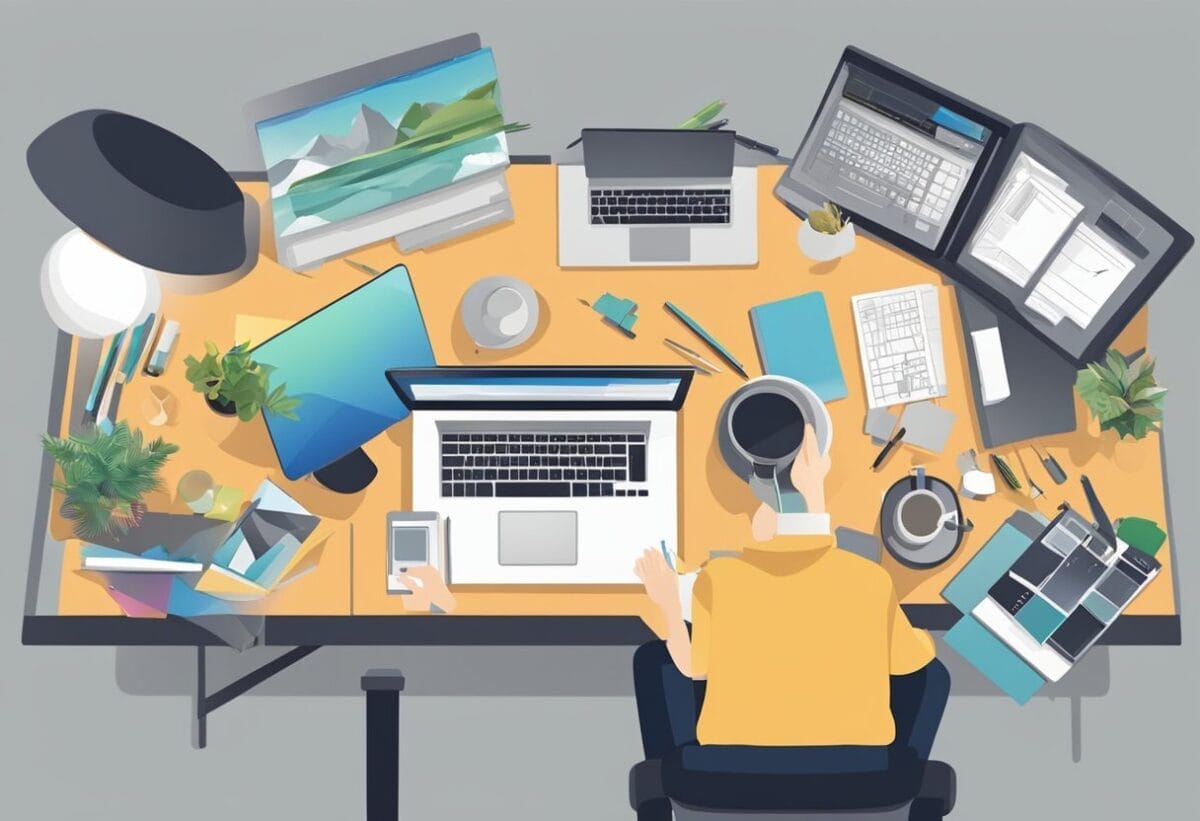
Graphic designers create visual content to communicate messages effectively. They use art and design skills to develop layouts for various media.
Key Roles and Responsibilities
Graphic designers work on a variety of tasks in additional to using design software like Adobe Illustrator and Photoshop to create designs.
- Meet with clients to understand their needs and brainstorm ideas.
- Developing logos, brochures, ads, and websites.
- Collaborate with other designers, marketers, and clients.
Your main goal is to convey the client’s message clearly through visual content.
- Time management is essential to meet deadlines.
- Attention to detail is crucial, as clients expect high-quality work.
Graphic Design Current Trends and Future Outlook
Graphic design is always evolving. Keeping up with current trends is important for staying relevant. Trends popular today are:
- Minimalistic designs
- Use of bold colors
With technology advancing, skills in UI/UX design are becoming more valuable and are critical skills that every graphic designer should know as these skills let you understand user behavior and create intuitive interfaces that can set you apart.
If you want to grow as a graphic designer, you’ll need to be adaptive and open to learning new design software and techniques.
The future looks bright for graphic designers.
Today, the demand is growing due to the digital age, and with the right skills, you can thrive in this field.
Graphic Designer Salary
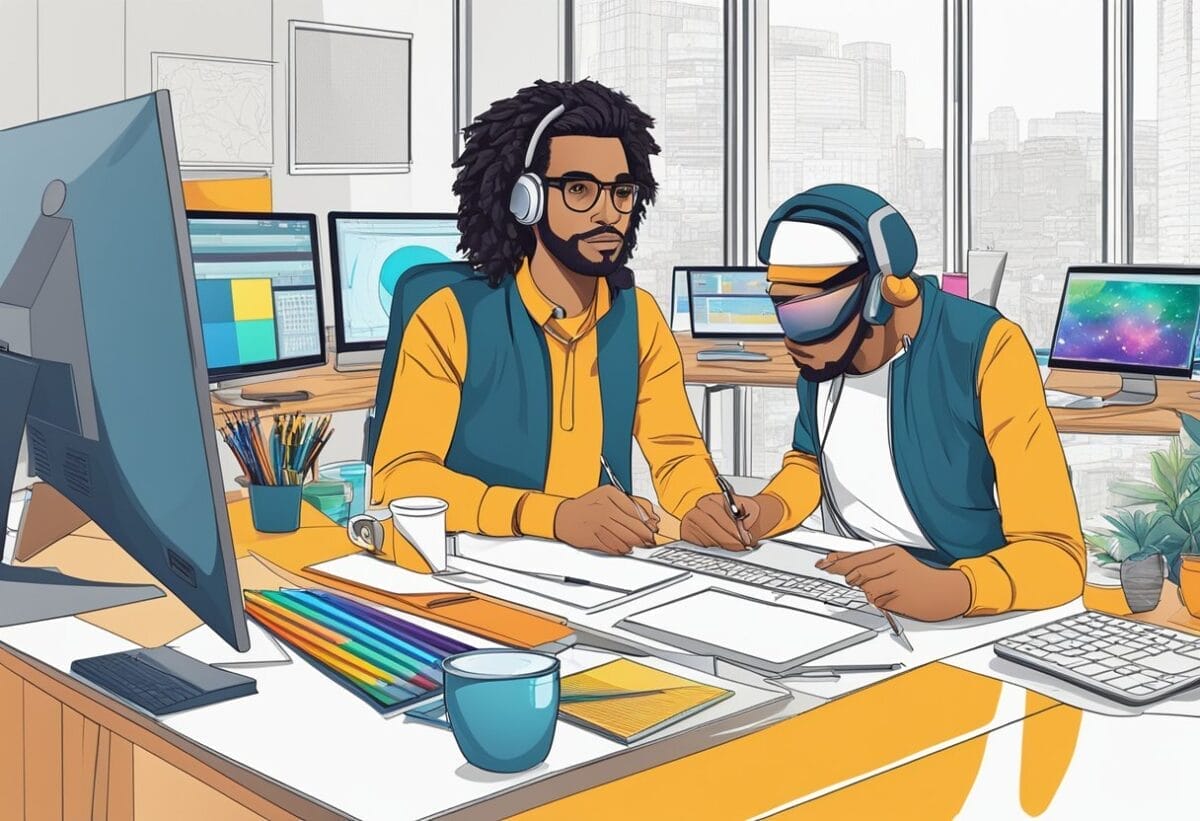
Graphic designers earn different salaries based on experience, location, and industry. The average annual wage in the United States is around $64,700, or about $31.11 per hour.
Wage Percentiles
Wages vary widely among graphic designers:
- 10th percentile: $36,420 per year
- 25th percentile: $45,560 per year
- 50th percentile (median): $58,910 per year
- 75th percentile: $77,570 per year
- 90th percentile: $100,450 per year
Top Paying Industries
Some industries pay designers more than others. Top-paying industries include:
- Motion Picture and Video Industries: $102,260 per year
- Child Care Services: $99,940 per year
- Federal, State, and Local Government: $96,030 per year
- Aerospace Product and Parts Manufacturing: $93,800 per year
- Facilities Support Services: $91,750 per year
Employment Levels
Certain states and metro areas employ more graphic designers. States with the highest employment include:
- California: 29,460 jobs, $79,850 yearly
- New York: 18,320 jobs, $80,390 yearly
- Texas: 13,760 jobs, $57,830 yearly
Highest Concentration of Jobs
Some areas have a higher concentration of graphic design jobs:
- District of Columbia: $93,050 per year
- Oregon: $64,900 per year
- Vermont: $66,110 per year
Salary details can vary by location and industry. For more detailed wage estimates, refer to official resources.
How to Become a Graphic Designer?
To become a graphic designer, you need the right mix of education, skills, and practice.
Building a strong foundation, continuously learning new techniques, and showcasing your work can set you on the path to success.
Whether you aim to work at a top design firm or as a freelancer, your journey starts with passion and dedication.
Step 1: Graphic Designer Education and Training
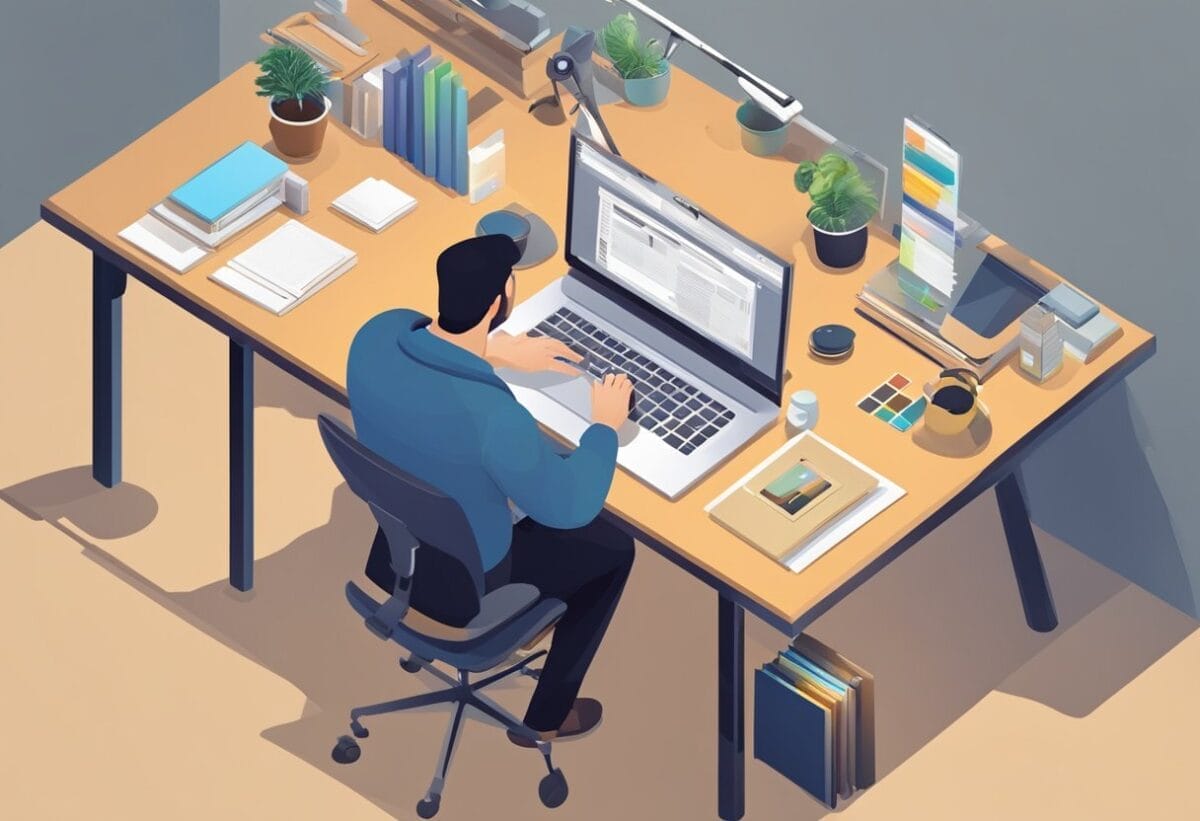
To become a graphic designer, begin with proper education and training. This involves choosing the right design programs and exploring online learning options.
Design Programs
Studying in formal design programs is a great start. Many colleges offer a graphic design degree or a fashion design degree. These degrees cover essential topics like color theory, typography, and digital illustration.
- A college degree in graphic design takes approx. four years.
- Program includes courses in drawing, web design, and branding.
Some institutions even offer design courses that specialize in specific areas, like motion graphics or UX/UI design. These courses help you build a strong portfolio, crucial for your career.
Make sure to choose a program accredited by a recognized organization to ensure quality education.
Online Learning
If you prefer flexibility, consider graphic design courses online. Many platforms, like Coursera or Skillshare, offer courses led by industry professionals. These courses range from basic design principles to advanced techniques.
Online graphic design programs are:
- More flexible and can fit into your schedule.
- Often provide certifications upon completion, which can enhance your resume.
- Offer community forums and project critiques. This helps you gain feedback and connect with other aspiring designers.
- Online learning programs offers a great way to learn new tools like Adobe Creative Suite or Sketch.
While online courses are beneficial, ensure they match the quality and depth of traditional design programs.
Taking advantage of both design degrees and online courses can equip you with a comprehensive skill set, making you a versatile graphic designer.
Step 2: Building Your Skills
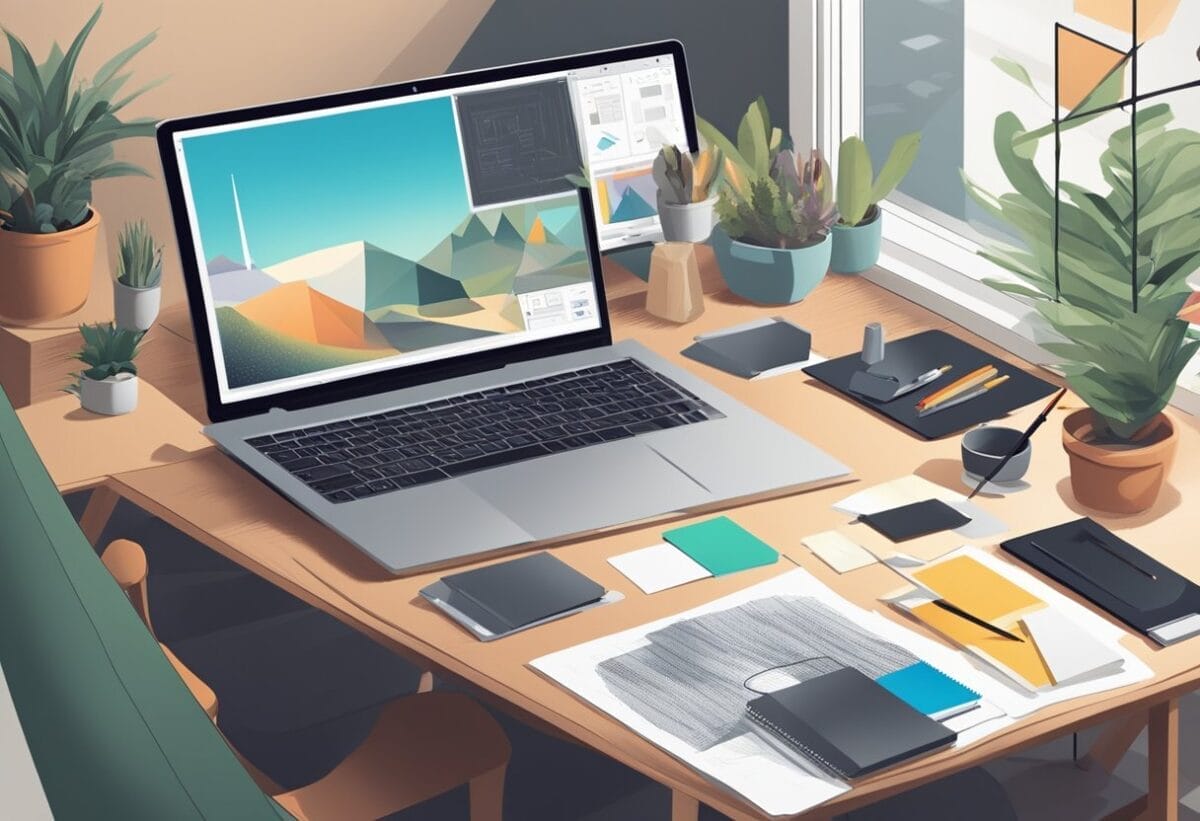
To become a successful graphic designer, you need to master design software, develop a strong portfolio, and gain real-world experience.
These key areas will help you build the necessary skills and showcase your work effectively.
Mastering Design Software
One of the first steps in becoming a graphic designer is learning how to use design software.
- Basic tools essential for creating and editing graphics; Adobe Photoshop, Illustrator, and InDesign.
- Specialized tools and software to explore; CorelDRAW and Sketch.
Online tutorials and courses are great for learning these programs at your own pace. Practice regularly to improve and retain your skills.
Working with these tools will help you understand various design techniques. It also prepares you for industry standards, making you more attractive to potential employers or clients.
Portfolio Development
Your graphic design portfolio is your visual resume. It showcases your best work and demonstrates your skills and creativity.
- Start by including projects that highlight different aspects of design, such as logo creation, web design, and print layouts.
- Use platforms like HQHIRE and Behance or create your own portfolio. Ensure that each piece is presented clearly, with a brief description of the project and the role you played. High-quality images and organized layout are key.
- Continuously update your portfolio by adding new projects and removing outdated work. Seek feedback from peers and mentors to improve the quality of your portfolio.
Real-World Experience
Gaining real-world experience is crucial for building your graphic design skills. Internships, freelance work, or volunteer projects provide opportunities to work on real projects and meet client needs.
- Start by looking for internships at design firms or marketing agencies.
- Freelancing on platforms like Upwork or Fiverr can also help you gain experience and build a client base.
- Volunteer your skills for non-profits or community events to expand your portfolio.
- Networking with other professionals in the field can lead to job opportunities and collaborations.
- Attend industry events, join design groups, and connect on LinkedIn to stay engaged with the design community.
By gaining real-world experience, you’ll learn how to manage projects, communicate with clients, and meet deadlines. These experiences will enhance your skills and prepare you for a successful career in graphic design.
Step 3: Launching Your Career
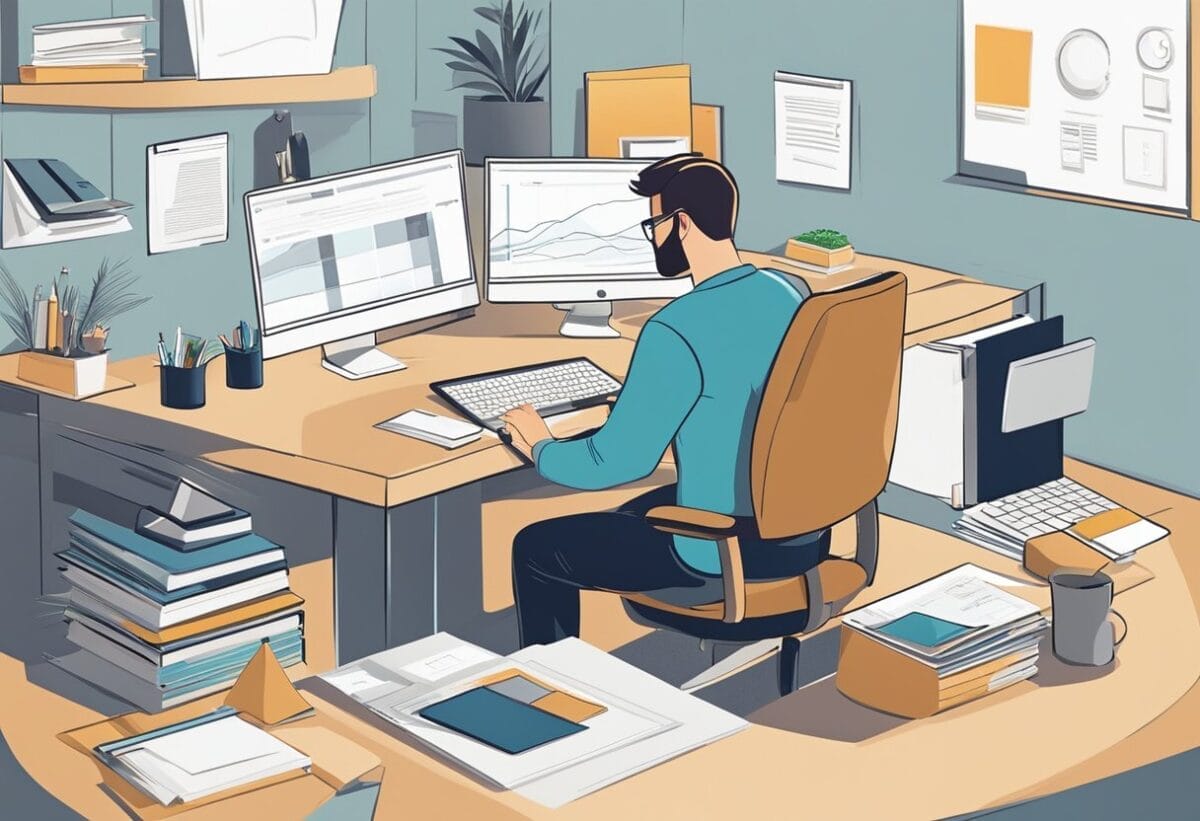
Starting your career in graphic design can be thrilling and challenging. You need to network, find job opportunities, and build a strong personal brand to stand out.
Networking and Internships
Networking is essential for success. Attend industry events, workshops, and conferences.
- Helps you meet professionals.
- Help you to learn about new trends.
- Helps you to meet potential clients.
You can also join online communities and social media groups related to graphic design.
Internships provide practical experience.
- Help you apply what you’ve learned in school to real-world projects.
- Help you to gain experience when applying for jobs.
Look for internships at design firms, advertising agencies, and in-house design departments. This experience can be invaluable when applying for jobs.
Job Search Strategies
- Resume and Portfolio: A strong resume and portfolio are crucial. Highlight your skills, experience, and projects. Include a mix of personal and client work to show your range.
- Job Boards and Websites: Use job search websites like Indeed, LinkedIn, and Behance. These platforms have many opportunities for graphic designers. Set up job alerts to stay updated.
- Networking: Leverage your network. Inform your contacts that you are job hunting. They might know of openings or recommend you.
Building a Personal Brand
- Online Presence: Create a professional website showcasing your portfolio. This is a place where potential employers and clients can see your work. Make sure it’s easy to navigate and visually appealing.
- Social Media: Use platforms like Instagram, Twitter, and LinkedIn to share your work. Engage with the design community by commenting on others’ posts and joining discussions. This can increase your visibility.
- Consistency: Ensure your personal brand is consistent across all platforms. Use the same colors, fonts, and design elements. This helps people recognize and remember you.
Taking these steps can position you well in your career as a graphic designer.
Networking, searching for jobs effectively, and building a personal brand are key to success.
Step 4: Growing in The Business of Graphic Design
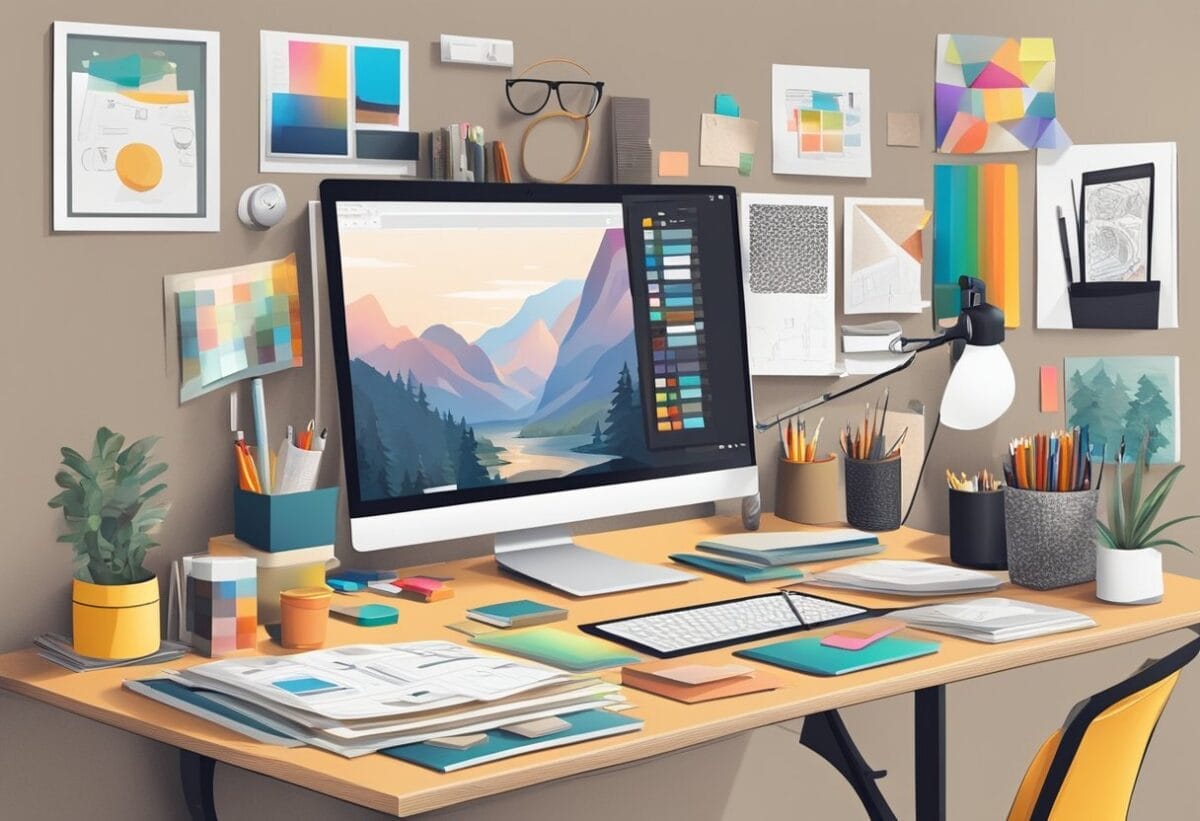
Understanding the business side of graphic design is crucial for building a successful career.
From collaborating with different industries to ensuring your work aligns with business goals, mastering these elements will set you on the path to a thriving graphic design career.
Collaboration in the Marketing Industry
Working with the marketing industry involves creating visually appealing materials that communicate a brand’s message. You’ll design advertisements, social media graphics, email newsletters, and more.
Marketing professionals rely on your expertise to craft designs that attract and retain customers.
- Understand marketing trends and strategies to better support your collaborators.
- Tailor your designs to the target audience, ensuring every piece resonates with those it aims to reach.
- Effective communication and feedback loops are essential for delivering impactful marketing materials.
Collaboration in the Publishing Industry
In the publishing industry, your role as a graphic designer centers on book covers, interior layouts, and promotional materials. You’ll work with authors, editors, and publishers to bring written content to life visually.
- Creating an eye-catching book cover involves understanding the book’s genre, target audience, and the author’s vision.
- Interior layouts require attention to typography, spacing, and readability to ensure a pleasant reading experience.
- Collaboration and clear communication with the publishing team will help align the visual and textual elements seamlessly.
Collaboration in the Brand Development Industry
Graphic designers in brand development work closely with brand strategists to create logos, color schemes, and brand guidelines. Your designs will define how a brand is perceived by the public.
- Crafting a strong visual identity involves deep understanding of the brand’s core values and target audience.
- Consistency is key; all elements must work together harmoniously. Successful designers ensure brand visuals are instantly recognizable and memorable.
- Effective collaboration requires aligning your creative vision with strategic goals to build a cohesive brand identity.
Collaboration in the Fashion Industry
In the fashion industry, graphic designers often create lookbooks, advertising campaigns, and digital content for fashion brands. Your work supports the visual narrative of fashion collections.
Understanding fashion trends and the business side of fashion is vital.
- Your designs should complement the brand’s aesthetic and appeal to its audience.
- Work closely with fashion designers, photographers, and marketers to ensure your visuals enhance the overall presentation of the fashion line.
- Flexibility and creativity are crucial to keep up with the fast-paced nature of the industry.
Collaboration in the Gaming Industry
Designing for the gaming industry involves creating game interfaces, promotional materials, and in-game graphics. You’ll collaborate with game developers, artists, and marketing teams.
Your designs impact the overall user experience and immersion of the game.
- Attention to detail, understanding user interfaces, and creating visually engaging elements are key.
- Effective communication with the development team ensures that your graphics align with the game’s artistic style and functionality.
- Stay updated on gaming trends to keep your work relevant and engaging.
Step 5: Building a Successful Career
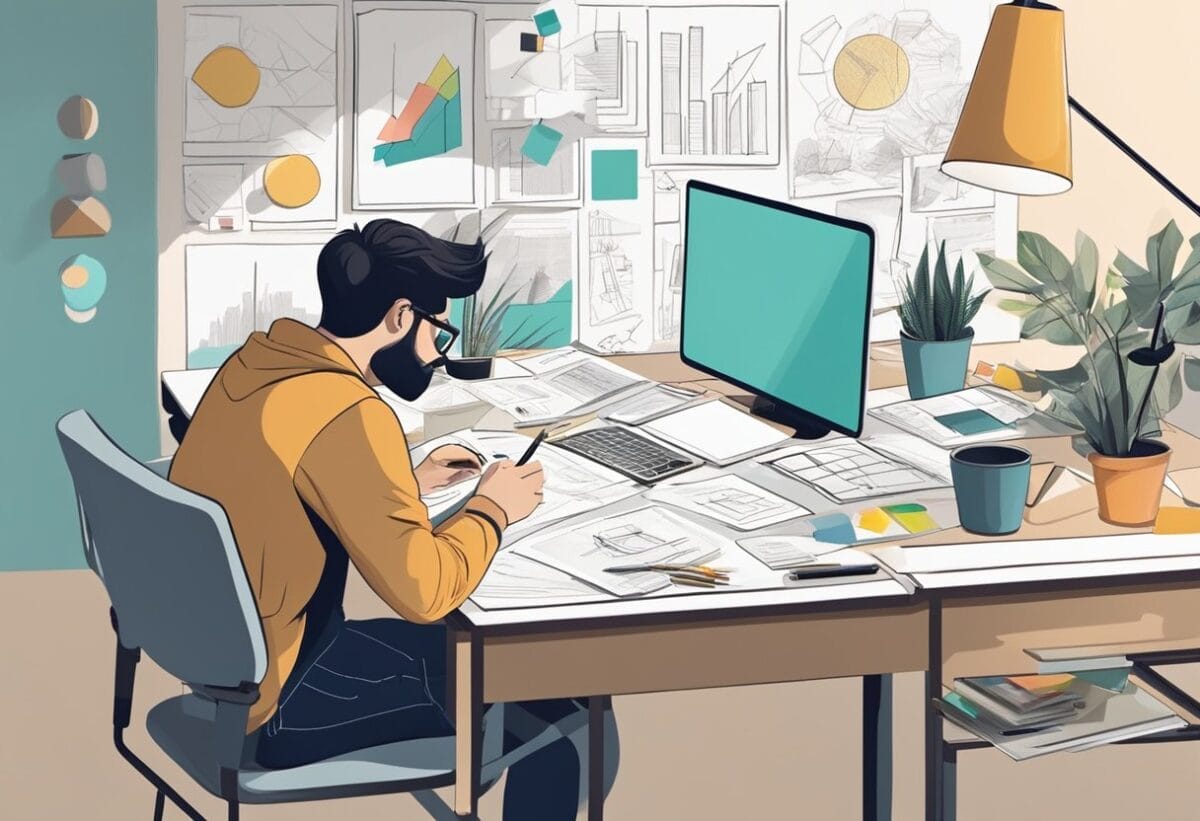
To build a successful career in graphic design, focus on creating a unique personal brand, continuous learning to adapt to changes, and exploring entrepreneurship and freelancing opportunities.
Building Your Personal Brand
Your personal brand sets you apart. Develop a strong portfolio showcasing your best work. Include a mix of projects to show variety and skill.
Create a professional website. This is a hub for potential clients and employers. Use clean design and easy navigation.
Be active on social media platforms like LinkedIn, Instagram, HQHIRE and Behance. Share your work consistently. Engage with the design community. Networking is key to finding new opportunities.
Networking Tips:
- Attend design conferences and workshops
- Join online forums and groups
- Collaborate with other designers on projects
Continuous Education and Adapt
The design field is always evolving. Stay updated with the latest trends and technology. Enroll in online courses, attend workshops, and read design blogs.
Learn new software and design techniques. Adding skills like animation, UX/UI, and web design can make you more versatile.
Resources for Learning:
- Online courses (Coursera, Udemy)
- Design blogs
- YouTube tutorials
Adaptability is crucial. New tools and trends come and go. Being flexible helps you stay relevant in the industry.
Entrepreneurship and Freelancing
Many graphic designers choose freelancing or starting their own business. This path offers flexibility and control over your projects.
First, understand your market. Identify your niche and target audience. This helps in marketing your services effectively.
Create a business plan. It should outline your services, pricing strategy, and marketing plan.
Freelancing Tips:
- Build a strong online presence (website, social media)
- Set clear contracts and terms with clients
- Manage your time efficiently to handle multiple projects
Consider platforms like HQHIRE, Upwork or Fiverr to find freelance projects. Starting small can help you gain experience and build a client base.
By focusing on these aspects, you can thrive as a graphic designer, whether working for a company or independently. Keeping these strategies in mind will help you achieve long-term success.
Get your 100% Free online resume and get noticed by potential employers. Start out of the crowded space of millions of remote job seekers and find the remote job that you will enjoy and love.
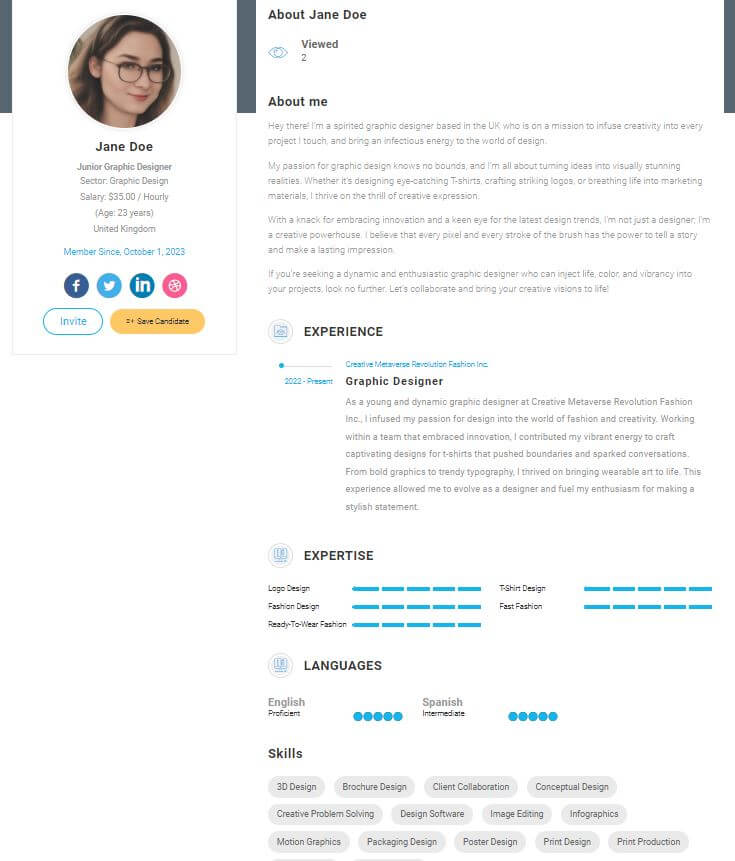
Join over 11,000+ achievers who are committed to achieving their career goals!





![Top 100 Job Interview Questions and Answers Sample [Full List] 14 List of Top Job Interview Questions and Answers With Samples](https://hqhire.com/wp-content/uploads/2024/11/Common-and-Tricky-Interview-Questions-31.jpg)
